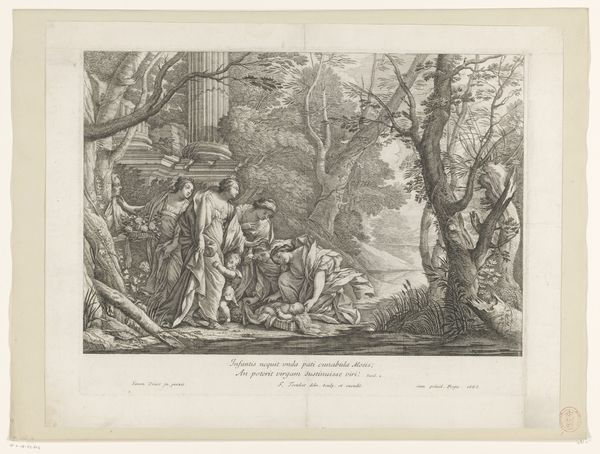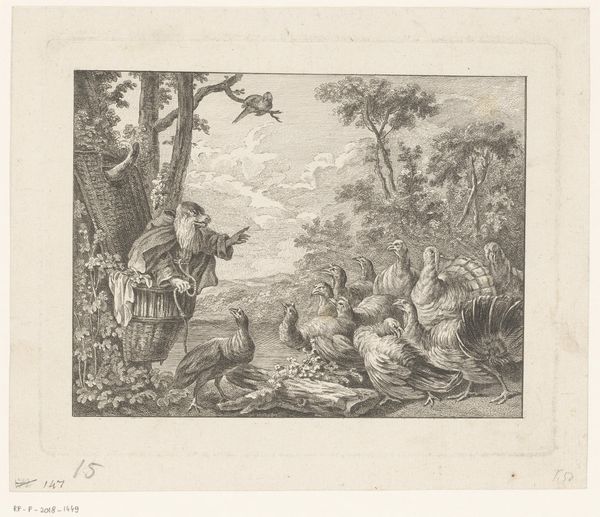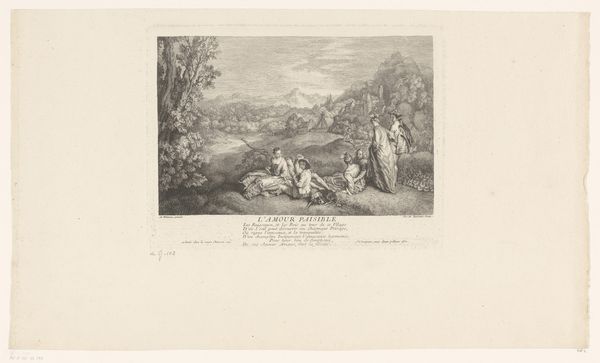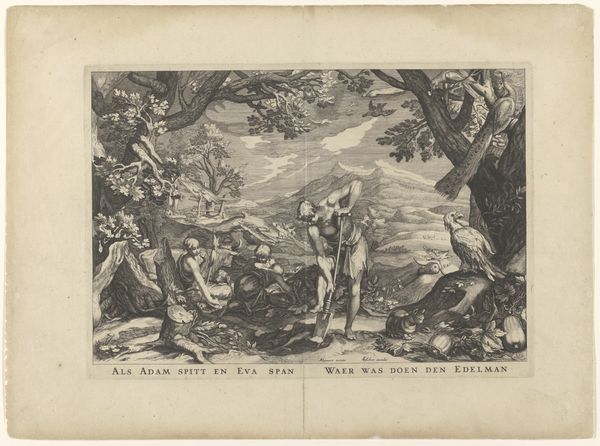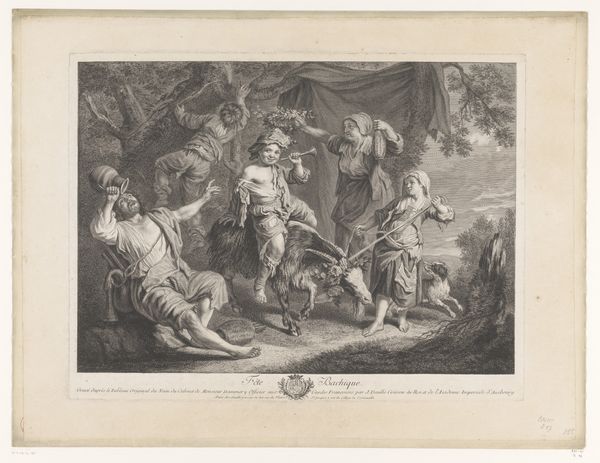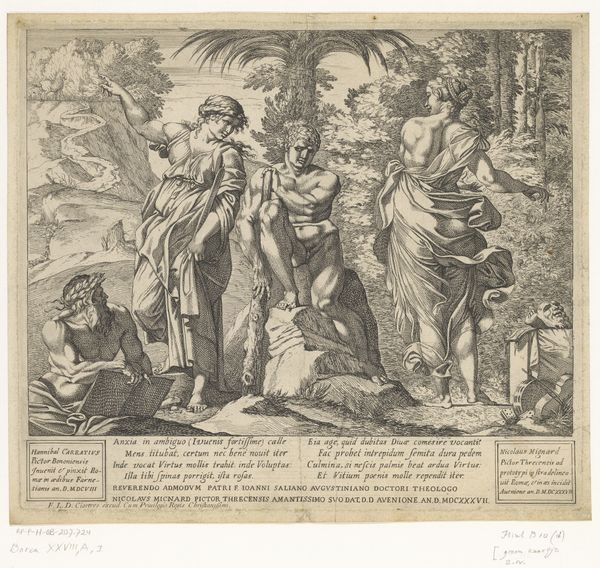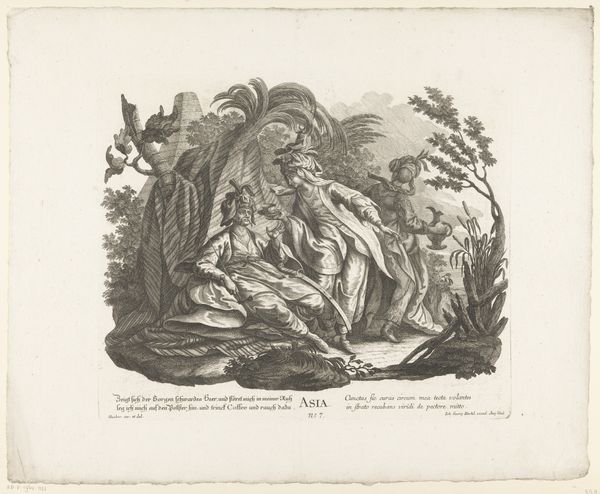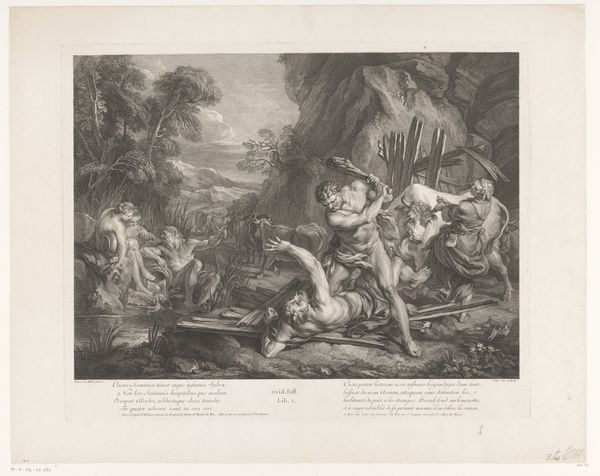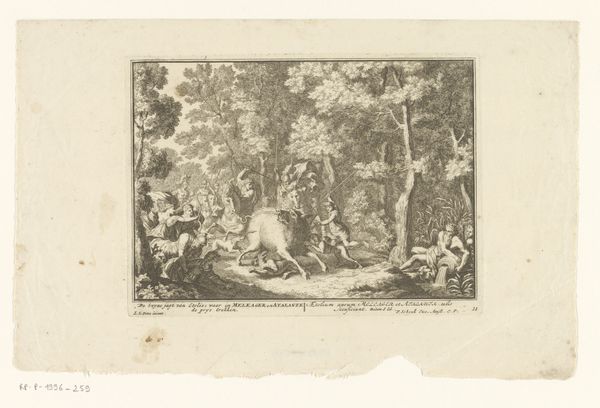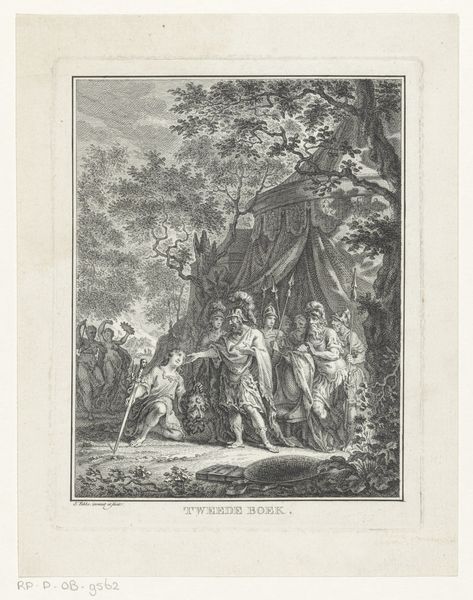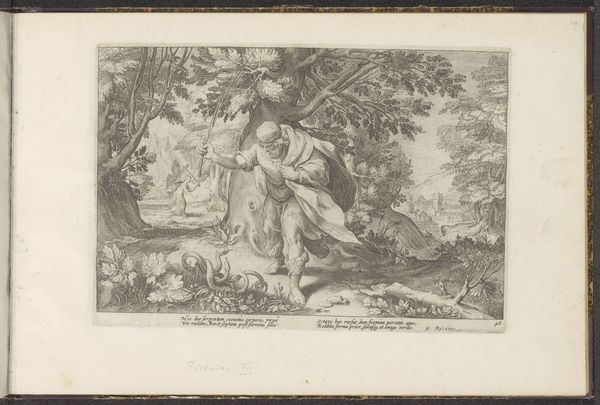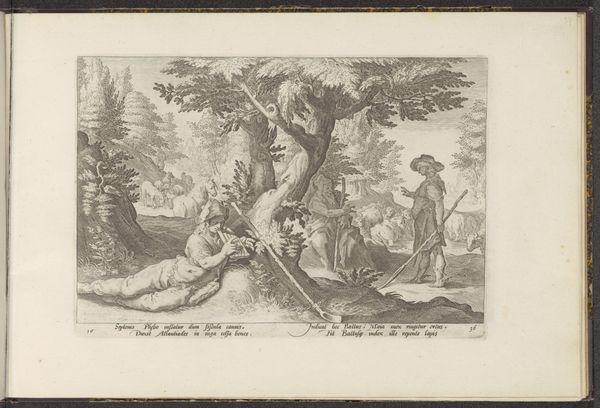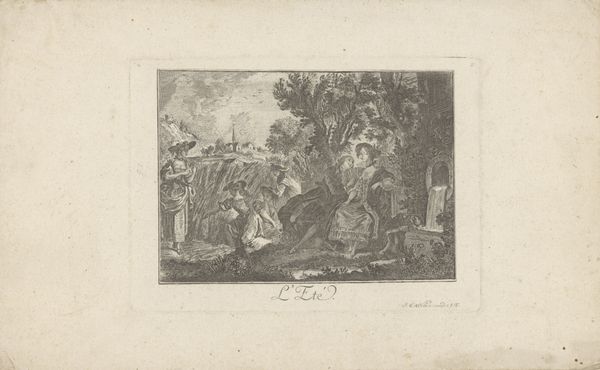
print, engraving
#
toned paper
#
light pencil work
#
baroque
# print
#
pencil sketch
#
old engraving style
#
landscape
#
figuration
#
personal sketchbook
#
ink drawing experimentation
#
pen-ink sketch
#
line
#
pen work
#
sketchbook drawing
#
history-painting
#
sketchbook art
#
engraving
Dimensions: height 381 mm, width 503 mm
Copyright: Rijks Museum: Open Domain
Curator: Let's discuss this print, Abraham and Isaac Journeying to the Place of Sacrifice, created around 1665. It's currently housed at the Rijksmuseum. Editor: My immediate response is one of profound somberness. The tonal range, especially the gradations within the grays, contributes to this feeling. It almost feels like witnessing a repressed anxiety played out in monochrome. Curator: Indeed, the lack of color further accentuates the gravity of the moment. If we look at the lines themselves, observe the artist’s delicate handling, especially in the rendering of the landscape—it adds another dimension to the central theme. We see clear formal strategies at work, especially through the positioning of figures against the deep background to heighten contrast and dramatic intensity. Editor: And consider the symbolic weight of that contrast! Light against dark is an eternal motif for moral choices, with Abraham’s internal conflict visually laid bare for us. His faith, of course, but also the immense sorrow such devotion demands. What strikes me as especially memorable is the way the artist integrates the lamb in the foreground: it represents the sacrifice to come, a foreshadowing that lends the composition tremendous emotional tension. Curator: Precisely! Further the structural aspect creates a sort of directional viewing. My eye is drawn left from the two characters and am immediately captured by the approaching angels from the top left before moving again across to Abraham and the animal. In this reading, these two sections offer opposing positions on the canvas. Editor: Good observation! These types of themes surrounding morality can take multiple interpretations, each as valid as the next. The print makes extensive usage of culturally powerful images. The narrative is all. And that narrative relies on visual and remembered symbolic weight to communicate with the viewer. Curator: In the end, the work succeeds in large part thanks to this visual language. It is so simple, but structurally profound that the viewer comes away affected even without any further context. Editor: Absolutely, It’s a masterclass in how images carry complex emotional and theological freight.
Comments
No comments
Be the first to comment and join the conversation on the ultimate creative platform.
